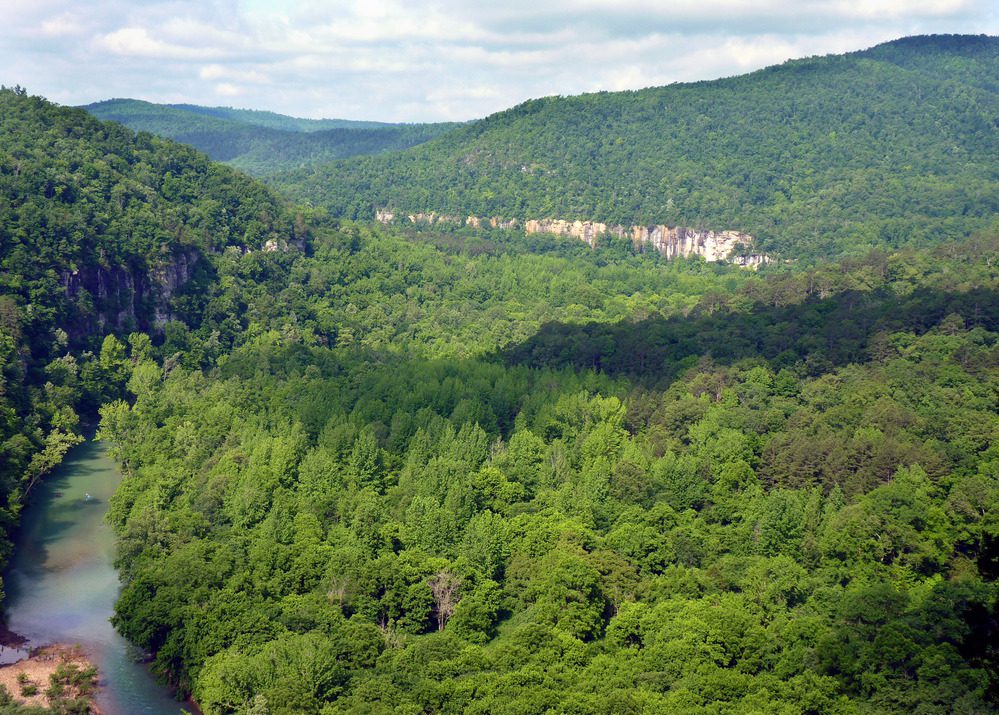Sitting right in the heart of the continental United States, and once serving as the last stop along the road to the wild frontier from the relatively tame, civilized eastern part of the country, the great state of Arkansas is in many ways still a place caught between these two geographies.
While some parts of the Natural State (formerly “The Land of Opportunity”) feel as southern as southern gets in the wide, flat cotton-field blanketed farmlands to the southeast, other parts can be just as imbued with a Midwestern aesthetic and culture that feels as corn fed Americana as antebellum. Even still, western Arkansas’ gently rolling plains bleeding into Oklahoma and its high, spare Ozarks reaching in Missouri couldn’t be worlds further apart.
The 29th largest landmass state covers a lot of ground, geographically and topographically, but within its borders, Arkansas also contains a treasure trove of sights and educational opportunities both natural and historical.
Luckily for those interested, the sights and history are contained in Arkansas’ own contributions to the national park service and remain available for visitors.
Below are some highlights that the Razorback state has to offer:
ARKANSAS POST NATIONAL MEMORIAL: Located near present-day Gillett, Arkansas at the confluence of two mighty rivers, Arkansas and the Mississippi, this trading post stood once at the very crossroads of America both economically and culturally. As the first semi-permanent French settlement established in 1686, this trading post was the first marker in a long tug-o-war between France, Spain, and England for control of the Mississippi River Valley. Over the years, the Arkansas Post relocated due to flooding from the Arkansas River, but its position in the river valleys long served as a strategic stronghold for French, Spanish, English, and later Confederate militaries. While it serves as a learning opportunity, this memorial also offers visitors activities like fishing, hiking, and even historical weapons demonstrations.
Long heralded as an oasis of “healing”, the natural hot springs located within this national park are some of nature’s greatest wonders and some of the most popular of all Arkansas tourist destinations.
The ancient springs, panoramic Ozark views, incredible geology, stunning hikes, and constant, flowing creeks make Hot Springs National Park a truly unique destination. Discovered by early American pioneers known as the Dunbar-Hunter exploration unit in 1804, and sent by then-president Thomas Jefferson to explore the furthest reaches of the Louisiana Purchase, these natural hot springs quickly became a bustling town and later became known as “America’s Spa”. Hiking, biking, and birding are popular activities in addition to exploring and enjoying the numerous bathhouses.
PEA RIDGE NATIONAL MILITARY PARK: This national park commemorates a little-known but consequential battle in the Civil War. Perhaps the most pivotal conflict west of the Mississippi River, Pea Ridge was the site of nearly 23,000 soldiers meeting in March of 1862 and was a turning point in the war in the western states. The story of the Battle of Pea Ridge is a unique one in that it doesn’t necessarily concern great generals and brilliant tactics but stands today more as an example of what happens when the fighting hits home. Pea Ridge is a story of volunteers and civilians who, seeing the devastation in their own backyards, brought wounded men into their own homes to care for them. A little-told but important chapter in the war between brothers, this national military park is a must-see for the historically curious. Stop in to learn more about the battles that “saved Missouri for the Union” and turned the tide of the war in the west.
BUFFALO NATIONAL RIVER: One of the few remaining undammed rivers in North America, the Buffalo River winds down through the Ozarks for nearly 135 miles before reaching and joining the White River. Today this river and the national park that preserves it, help protect it for all manner of nature activities. Raft down the rapids, float the gentle stretches, fish the clear, cold waters or simply take a good, long hike along its shores looking up at the gorgeous bluffs on either side. Visit one of the old mills that speckle the area and be sure to stay after dark for some remarkable, clear night skies to star-gaze. The Buffalo National River has it all!





